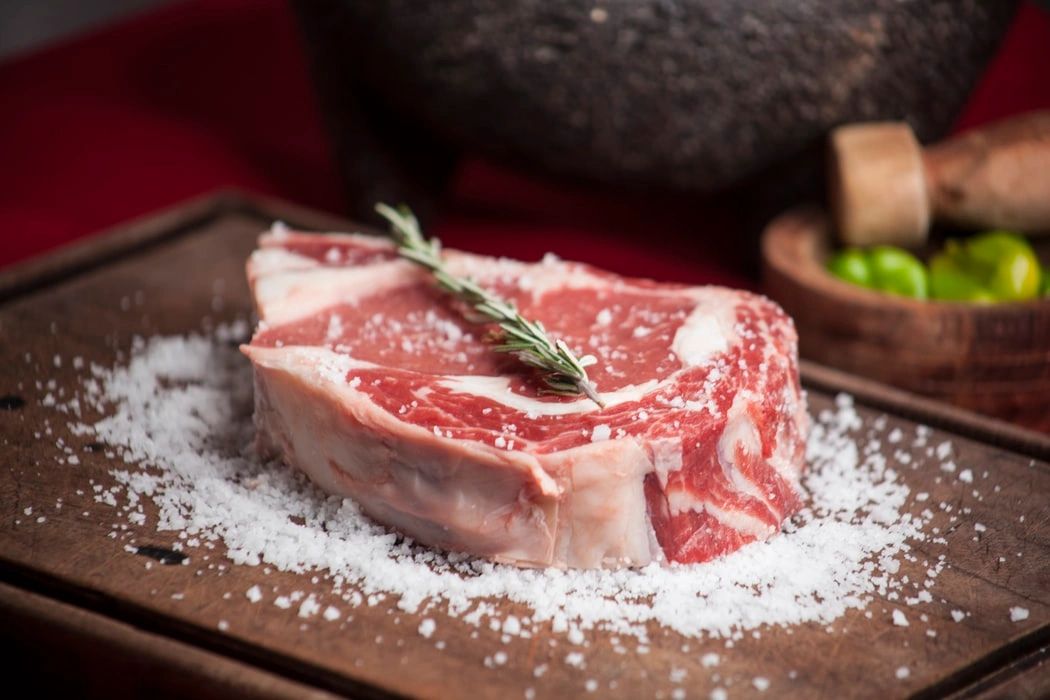#food #beef #angus #wagyu #knights #knightsbridgedao
$KNIGHTSUSD $CROWNSUSD
Here I explain some Key things about beef from coveted breeds, aging techniques and USDA grades because beef is the food of Knights.
Here are some of the breeds that are common in western butcher shopps:
Angus
One of the most common premium cattle breeds found in the United States, Aberdeen Angus aka Black Angus, hails from Northeastern Scotland. The black, relatively small in size cows tend to boast well-marbled meat depending on how and where it was raised.
Hereford
Hereford, which originated in Herefordshire, England, is another very desirable breed, often with a good marble score. The quality is almost as high as Angus.
Wagyu
Incredibly tender with a buttery soft flavor, Wagyu beef is prized and expensive. It is a breed that originated in Japan that produces big muscles and therefore big primal cuts with an incredible marble score running through them.
Often when you see Kobe on a menu, it’s referring to the Wagyu breed, but real Kobe beef only comes from Tajima strain of Japanese Black cattle, raised in Japan’s Hyōgo Prefecture. It is hard to get—about 7,000 head of Tajima-gyu cattle are taken to market per year, and only 5,500 or so get certified as Kobe beef, so it is even pricier than regular Wagyu.
Currently, only 6 importers bring it into the United States. Most of the Wagyu beef found in the US market is actually a cross-breed. As it is very rare to find full breed Wagyu steer, they are very prized and very expensive.
Grass-Fed
Grass-fed cattle has been fed on grass for the duration of its lifetime. The flavor tends to boast more minerality and an overall taste. However, just as the breed can differ according to where and how it was reared, there can be huge differences in the quality of grass-fed beef.
Note: The term “grass-finished” means that cows were finished on forage, but may have been fed grain at some points in their lives.
Grain-Fed
Naturally, cows are supposed to live off grasses. Cows are ruminants, meaning their rumen, a digestive organ that holds beneficial microbes converts the cellulose fibers of grass into nutrients. In the United States, grain-feeding is considered conventional, as most cattle are reared on feedlots, which allows them to reach market weight much faster.
Aging: Japan uses 5different grades, and Australia has 9, in the United States, the USDA grades beef for tenderness, juiciness, and flavor by examining the marbling of the cuts.
Prime
Produced from young, well-fed cattle, prime beef are rich in marbling with 8 to 13% fat. On average, less than 8.6% of all beef graded in the U.S. earns the Prime label, most of which goes directly to fine restaurants and hotels.
Choice
A step down from the abundant marbling of Prime, Choice has slightly less marbling but is still very juicy, tender and flavorful. Most restaurants serve Choice.
Select
“Select is the bottom, which is not a bad thing, It is uniform in quality and leaner than the higher grades, Select is still fairly tender. It just does not have the same level of marbling, so it lacks some of the juiciness and flavor.
The tender cuts are fine cooked with dry heat, but the less tender ones, like skirt or flank steaks, should at least be marinated before cooking.
Aging Beef
Dry-Aging
Large cuts of beef are hung in a dry-aging room for anywhere from a few weeks to several months before getting trimmed and sliced into steaks in this low-moisture curing process. 2 things happen. Mold gets introduced, adding a nuttiness the same way it does to cheese, and the meat starts to lose moisture, tenderizing it and concentrating the beefy flavor.
The longer the meat hangs, the more moisture evaporates—and the thicker the bark that needs to be trimmed off—bringing down the weight substantially. So the cut that weighed 10 pounds when it went into the dry-aging room comes out weighing 8, thereby increasing the price significantly.
Wet-Aging
Sealed in its own juices inside a cryovaced bag, wet-aged steaks essentially brine in their own blood. Some evaporation does take place, as the juice does begin to come out of the meat the longer it sits, but this aging method produces juicier steaks then its dry-aged counterparts.
Unaged
Most styrofoam and plastic-wrapped commodity beef found in the grocery store is not aged and does not have the same level of marbling of higher-graded steak. These unaged cuts get some minerality from the blood and a fresh beef flavor; however, because the meat has had less time to breakdown the steaks tend to be more fibrous.
A trick: if you do not want to spend extra cash for aged meat, you can age big cuts of steak on a wire rack in the open-air of your fridge for a few days. What you gain is that little bit of evaporation that will help the flavor a bit.
Knights Cuts
Rib
Prime rib, prime rib roast, ribeye steak, and back ribs all come off the rib section. It’s located right behind the chuck on the upper section of the forequarter. These steaks and roasts are already tender, so they do not require the same slow cooking process as other primal cuts
Sirloin
The section of the cow that runs right behind the short loin is the sirloin. It includes the tenderloin, the leanest and most tender cut on the whole beast. The appropriately titled loin runs perpendicular through the sirloin into the short loin where it can become a part of T-bone steaks or separated depending on the butcher’s preference.
Storage: Beef that is cryovaced can last to 3 wks in the meat drawer. If it has been sealed at the manufacturer, there is no air of bacteria getting into the packages to break down the fat and meat, causing it to spoil. If you do need to stick a steak in the freezer, do not do a quick thaw.
Have a healthy, prosperous weekend, Keep the Faith!









